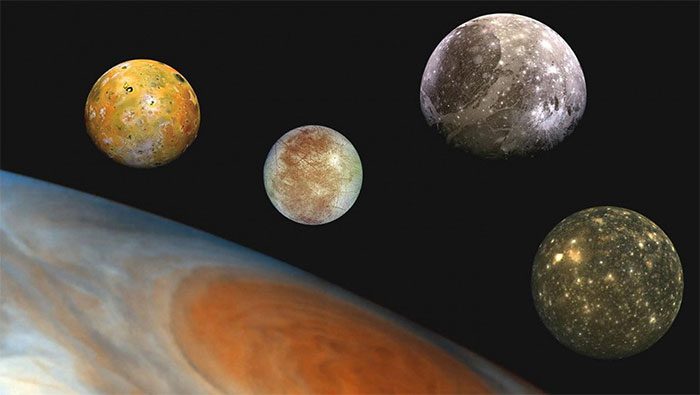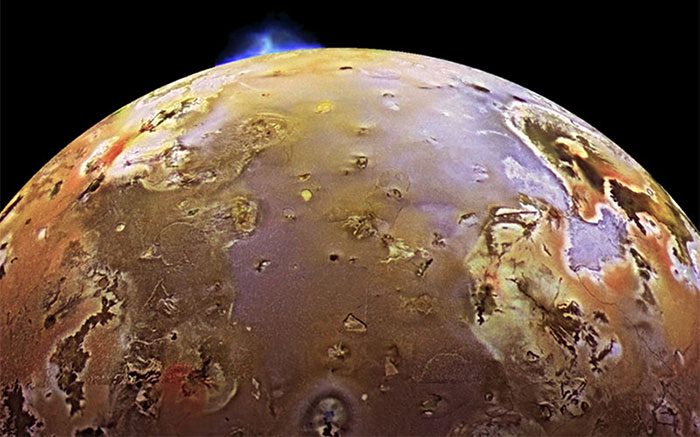At least one life-bearing world, with a structure resembling a planet, was born in the early days of the Solar System until it was attacked by Jupiter, which was shining 10,000 times brighter than it does today.
A team of astronomers led by planetary scientist Carver Bierson from Arizona State University has presented remarkable findings about four “Galilean moons” of Jupiter.
These four extraordinary worlds – Io, Europa, Ganymede, and Callisto – are considered “moons of life” and are the targets of many space agencies worldwide, including NASA and ESA, in the quest to find extraterrestrial life.

The four “moons of life” of Jupiter – (Image: NASA).
Currently, these moons still harbor many potential factors for life. According to Dr. Bierson and his colleagues, they were even more promising in their early formation and may have once had liquid water.
Based on known data about Jupiter and this giant moon group (Ganymede is even larger than Mercury), the research team modeled their evolution from the early days of the Solar System.
At that time, the Galilean moons were arranged in a row around Jupiter’s equator, resembling a miniature planetary system forming from the disc of material surrounding the primordial Jupiter, just like a new planetary system in the making.
As with other evolving star systems, Jupiter eventually matured, and the four moons officially formed while the disc of material vanished. This planet, still rich in energy today, shone brightly, though not as bright as a star, it was 10,000 times brighter than it is now.
The four “moons of life” were too close to Jupiter, and those conditions caused them to be irradiated far more intensely than what they received from the Sun, or at least the two closest moons, Io and Europa, had to endure.
Young Jupiter then became a “killer”, capable of blowing away more volatile compounds on these “mini-planets”, causing the water to vaporize.
As a result, these celestial bodies, which were born as planets suitable for life, underwent drastic transformations into some of the most bizarre celestial forms. For instance, Callisto is scarred with the heaviest impact crater in the Solar System and appears to have a structure that is half rock and half ice, while Io is the least icy in the Solar System.

The volcanic moon Io may have once been a “mini-planet” born to host life? – (Image: NASA).
Io has garnered special attention from the research team. It is known as a volcanic moon and the only place besides Earth with confirmed geological activity in the Solar System. However, its geological activity is too intense, turning it into a hellish environment.
The past may not have been this way. Io may have once had a significant amount of ice water after its formation but was “slaughtered” by Jupiter.
If this had not happened, Io could have been a “competitor” to Earth, especially when previous studies indicated that Io is close enough to Jupiter to have tidal interactions that could maintain many crucial reactions within the celestial body.
This research was recently presented at the 54th Lunar and Planetary Science Conference held in Texas, USA.





















































